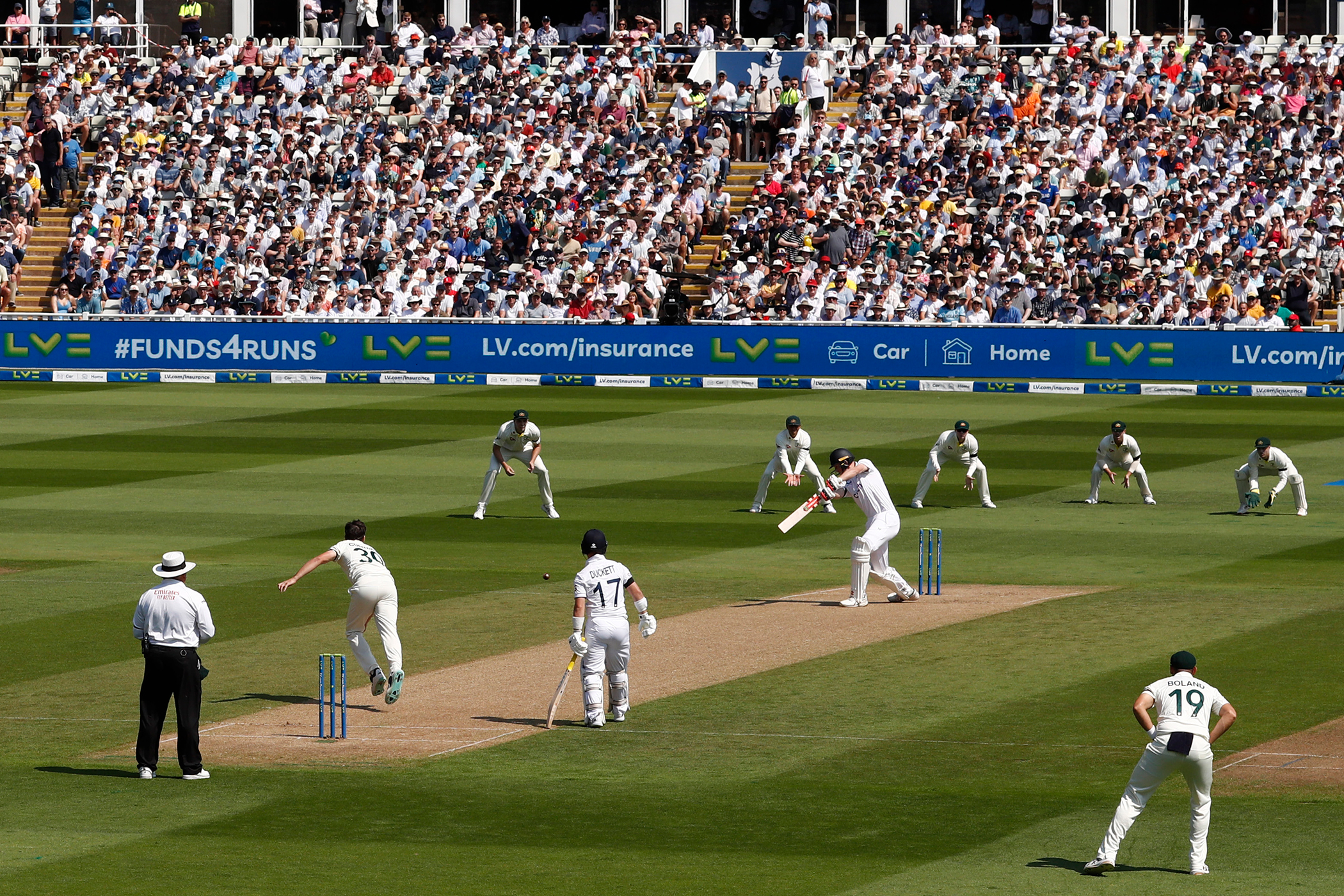The first ball of any match or series shouldn’t matter any more than any other. If anything, the opposite seems likelier: neither batter nor bowler being quite grooved in their task, it should, by rights, be in the nature of a preliminary, a sighter or range finder. Introduce the first ball to the admixture of the Ashes, however, and everything changes, is intensified, heightened, transmuted into gold.
Cricket Australia has heralded a plan for the Ashes to be seen on six hundred public digital screens around the country: “This will include iconic locations such as Federation Square in Melbourne, and Elizabeth Quay in Perth, along with several of Australia’s major stadiums where fans can enjoy the excitement of an iconic sports occasion.” I know, right: time to tax the word ‘iconic’. But I was also struck by the headline on the release – “The first ball of the Ashes set to captivate fans across the country” – as though CA’s minions could begin packing for home once the opening delivery was done with. We are at the point where if Mitchell Starc or Jofra Archer’s initial offering on Friday does not open a crack in the world revealing a portal to the fourth dimension, there may well be a sense of anti-climax.
Yet maybe we downplayed it too long, because that first ball does play on the nerves of the participants. The stress on the batter is acute, and the potential for drama first exemplified at the Gabba in 1936 when Ernie McCormick, Australia’s disarmingly swift opening bowler, bounced out Stan Worthington, a hapless ersatz opener from Derbyshire. Check out Neville Cardus’s account in Australian Summer (1937), by the way, for some delectable writing, unassisted by replays and enriched by an unexpected choice of word.
The beginning was catastrophic; McCormick’s first ball, which he bowled like a hurricane, pitched short, and rose high at Worthington’s left shoulder. Worthington hooked impulsively, foozled his stroke, skied it, and Oldfield, after starting late, ran forward in a panic, and held the catch. Poor Worthington stood dazed a moment, then departed head down.

“You imagine yourself smashing the first ball of the Ashes series for four, and then you imagine yourself being caught at slip, and then you imagine whipping one through mid-wicket,” recounted Andrew Strauss in Winning the Ashes Down Under (2011). “So many thoughts – and not many of them particularly helpful.” He was strung up to concert pitch by the preliminaries to 2010’s Gabba Test. Having won the toss and electing to bat, he felt a wave of emotion at the playing of the anthems, and foozled the third ball overeagerly to gully – hey, if it’s good enough for Cardus…
This, of course, can cut both ways. A batter brimming with adrenaline is poised to strike; an anxious bowler can err. I was in the Gabba’s rambling press box 31 years ago when Phil DeFreitas jogged in from the Stanley Street End to Michael Slater. It was sweltering hot; the turnstiles were still clicking as the ABC time pips signalled 10am; DeFreitas, who had only been entrusted with the newie (new ball) because Devon Malcolm had chickenpox, offered the limpest of long hops, which Slater smashed through point. For good measure, Slater whipped the over’s last ball through square leg. I swear that Martin McCague, already a traitor in the eyes of Australian countrymen, had shrunk a foot by the time he took the second over – Mark Taylor took him for two boundaries too, and McCague shortly limped out of Test cricket for good.
No bowler, of course, has lost it so completely as Steve Harmison, who devotes an entire doleful chapter of his autobiography Speed Demons (2017) to his opening sally in the Ashes of 2006-7. The context here was that Harmison’s first spell in the Lord’s Test of 2005 had signalled the unanticipated English charge; in Brisbane, unbidden, he was sounding the retreat, if not signing the surrender. The ball was stopped at second slip by Andrew Flintoff, hero turned captain, and essentially set the clock ticking on his abortive reign.

And here, perhaps, is the moment’s potency – it is an accentuation of the promise of every delivery in any game of cricket not a T10 or T20, where something might happen even if it generally doesn’t. Test matches are long – the longest spectator sporting events of their kind. Five-Test series are epic – like a mobile, summer-long Tour de France.
Yet, in a world increasingly conditioned to compression and instancy, the first ball offers the perfect cut to the chase, the tiny part to stand in for the great whole, particularly when expressing an emergent trend or dawning ascendancy: thus the tit-for-tat opening sallies of the last two Ashes, Starc torpedoing Rory Burns and Zak Crawley launching Pat Cummins, amplified in each instance by a home crowd’s cathartic roars. Take that! And that! Carpe diem! Acta non verba! For whatever happens, everyone in the press box will breathe a sigh of relief at not having to write yet another preview piece. So sit up, pay attention, enjoy. It may be nothing, but it may be… now, what’s a better word than iconic?
Photographs by Getty Images
